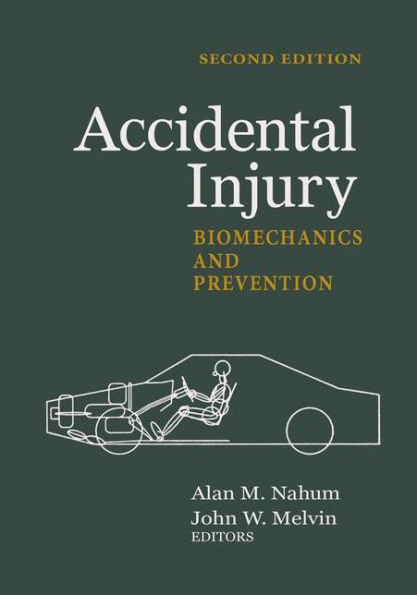Accidental Injury: Biomechanics and Prevention
Writing on accidental injury often seems to occur from one of two perspectives. One perspective is that of those involved in aspects of injury diagnosis and treatment and the other is that of those in the engineering and biologic sciences who discuss mechanical principles and simulations. From our point of view, significant information problems exist at the interface: Persons in the business of diagnosis and treatment do not know how to access, use, and evaluate theoretical information that does not have obvious practical applica tions; persons on the theoretical side do not have enough real-life field data with which to identify problems or to evaluate solutions. The ideal system provides a constant two-way flow of data that permits continu ous problem identification and course correction. This book attempts to provide a state-of-the-art look at the applied biomechanics of accidental-injury causation and prevention. The authors are recognized autho rities in their specialized fields. It is hoped that this book will stimulate more applied research in the field of accidental-injury causation and prevention. Alan M. Nahum, M.D. John W Melvin, Ph.D.
1101516564
Accidental Injury: Biomechanics and Prevention
Writing on accidental injury often seems to occur from one of two perspectives. One perspective is that of those involved in aspects of injury diagnosis and treatment and the other is that of those in the engineering and biologic sciences who discuss mechanical principles and simulations. From our point of view, significant information problems exist at the interface: Persons in the business of diagnosis and treatment do not know how to access, use, and evaluate theoretical information that does not have obvious practical applica tions; persons on the theoretical side do not have enough real-life field data with which to identify problems or to evaluate solutions. The ideal system provides a constant two-way flow of data that permits continu ous problem identification and course correction. This book attempts to provide a state-of-the-art look at the applied biomechanics of accidental-injury causation and prevention. The authors are recognized autho rities in their specialized fields. It is hoped that this book will stimulate more applied research in the field of accidental-injury causation and prevention. Alan M. Nahum, M.D. John W Melvin, Ph.D.
359.0
In Stock
5
1

Accidental Injury: Biomechanics and Prevention
637
Accidental Injury: Biomechanics and Prevention
637Hardcover(2nd ed. 2002)
$359.00
359.0
In Stock

Product Details
| ISBN-13: | 9780387988207 |
|---|---|
| Publisher: | Springer New York |
| Publication date: | 11/16/2001 |
| Edition description: | 2nd ed. 2002 |
| Pages: | 637 |
| Product dimensions: | 7.10(w) x 10.20(h) x 1.70(d) |
From the B&N Reads Blog
